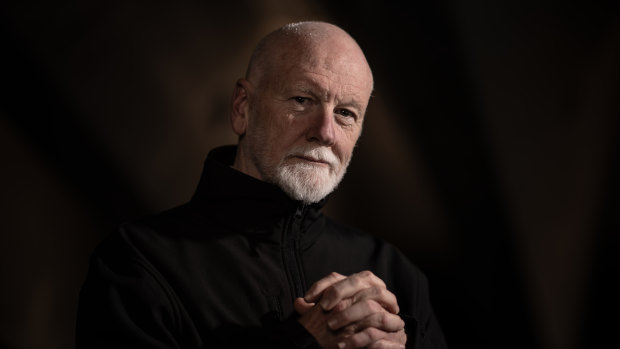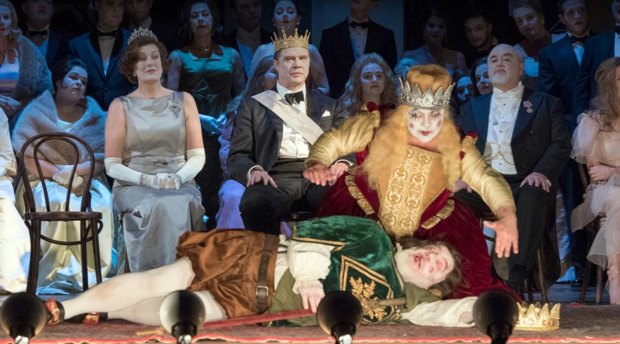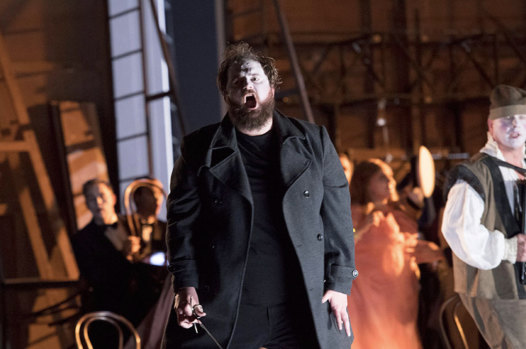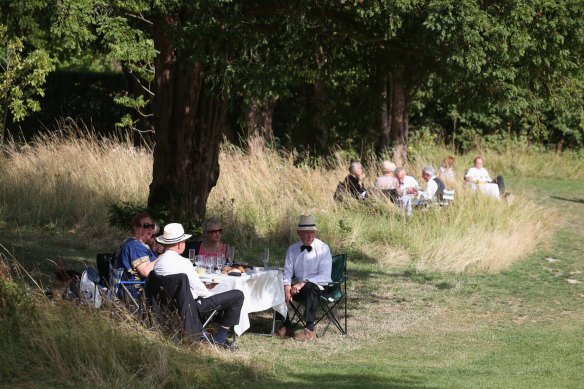By Joyce Morgan
Call it the Pimm’s factor. When composer Brett Dean shared news of his commission to transform Hamlet into an opera, he got some sage advice.
There would be a lengthy 90-minute interval in the opera house where it would premiere, Dean’s friend, the eminent British conductor Sir Simon Rattle, reminded him. That’s long enough to down an aperitif or two and picnic on the lawn at England’s bucolic Glyndebourne.

“We decided early on to focus on the psychological family drama”: Brett DeanCredit: Wolter Peeters
“It meant I would need to grab people at the opening of the second part,” Dean says.
His solution has been a knockout post-interval start and making the first half longer than the second.
“These are the practical things to consider when you’re planning the architecture of the piece,” he says.
The Australian-born, UK-based composer has had to turn his mind to unscheduled practical matters since he arrived from London ahead of Opera Australia’s Hamlet at the Sydney Opera House (where it will have just a 30-minute interval).
When we sit down to talk, Dean is still waiting for his luggage to join him two days after reaching Sydney. It’s not the missing clothes the genial, down-to-earth Dean is concerned about – he’s just bought a cheap striped shirt to tide him over – but other music he planned to work on during his first Australian visit in more than four years.
There’s an element of synchronicity in staging Hamlet at the Sydney Opera House. The building’s Danish architect, Jørn Utzon, was partly inspired by Hamlet’s castle, Elsinore (Kronborg Castle in Denmark).
Sydney is the smallest stage the production has played on. Dean says this heightens the sense of claustrophobia that is part of the piece, but it’s harder to realise on a large stage.

Hamlet when it premiered at Glyndebourne in 2017.
“There’s this hiding behind walls,” he says. “You’re even more aware of it somehow when it’s closer together. At one stage, side panels start encroaching on Hamlet and Horatio and that seems also more threatening than elsewhere.”
Dean was in Denmark when it was first suggested to him that he turn Hamlet into an opera. Initially – like the dithering Dane himself – he hesitated to approach Shakespeare’s behemoth.
“My initial response was, ‘Oh, Hamlet. That’s a bit big’,” he says. But his artist wife, Heather Betts, thought the idea was brilliant – and was even inspired to paint a series of artworks based on the play.
“Heather said to me, ‘What would Will Shakespeare say? He’d say go for it’,” says Dean. “It took me a while to warm to the idea, but I’ve never looked back.”
Dean, 52, had studied some Shakespeare at Brisbane State High School, although he was more familiar with King Lear than Hamlet. But he began a deep dive into the text, scholarly articles, and watching stage productions, films and recordings.
Adapting Shakespeare’s longest play into an opera was a herculean undertaking. There’s no definitive version of the play; several versions exist. When Dean and Canadian librettist Matthew Jocelyn first read the second folio version aloud, it took them five hours.

Allan Clayton, pictured here in the Adelaide Festival staging of Hamlet, will sing the title role in Sydney again. Credit: RICHARD HUBERT SMITH
“If it takes five hours to read every word, it would take at least ten to sing. It would be Hamlet: The Ring Cycle,” he says. “We decided early on to focus on the psychological family drama.”
Revenge, madness, regicide, suicide, betrayal – and a gravedigger – remain. Out has gone the world beyond Elsinore, replete with military, ambassadors and lawyers.
With a work as familiar as Hamlet, what to do about Shakespeare’s most famous line from the playwright’s most famous soliloquy? To sing or not to sing, that is the question. Dean has tackled that head-on, at least in a fragmentary way.
“There are these teasing aspects … whereby some things are said by the person you expect, but there are times when they’re said by other people,” he says.
Some of Shakespeare’s lines have been mashed up, sung by a different character or used out of chronology.
Dean and Jocelyn experimented with that approach in a song cycle, And Once I Played Ophelia, that they created before the opera.
“It was based on words that were not only said by Ophelia but said to Ophelia or about her,” Dean says.
The Ophelia factor
In the process, he decided Ophelia was more significant than he initially realised, and the opera reflects that.
“I wanted to make sure she wasn’t just a figure in white flowing robes who wafts in and out rather mysteriously and then kills herself,” he says.
Since its 2017 premiere at Glyndebourne, Hamlet has been staged at the Adelaide Festival, the Metropolitan Opera in New York and in Germany. British tenor Allan Clayton, who debuted to acclaim in the title role at Glyndebourne, will reprise the role in Sydney.
“I can’t think of a more moving Hamlet than the way Allan actually portrays [him],” Dean says.

Audience members picnic in the bucolic grounds of Glyndebourne Opera House.Credit: Getty Images
Like the earlier productions, the opera is directed by Neil Armfield, who also directed Dean’s previous opera Bliss, based on Peter Carey’s novel, in 2010. Two cast members from Bliss have key roles in Hamlet, soprano Lorina Gore (Ophelia) and Kanen Breen (Polonius).
Dean says he likely has a third opera in him, but he’s tight-lipped about what. More immediately, he will head to Townsville later this month for the Australian Festival of Chamber Music to perform his 2023 composition for viola and mezzo-soprano, I Starred Last Night, I Shone, based on a Les Murray poem. The Townsville performance will be a family affair, with Dean playing viola and his mezzo-soprano daughter Lotte Betts-Dean singing.
Dean also plans to catch up with his musician friend Simon Hunt, better known as satirist Pauline Pantsdown, who he credits with helping spark his composing career. Dean was a young violist with the Berlin Philharmonic when Hunt – a young rock musician – arrived in the German city and called up his fellow Australian.
“We really hit it off and started improvising together and started making noise,” Dean says. “I was just trying out stuff, which was incredibly liberating ... Simon would say, ‘Come on, give it a go. Just write some stuff’.”
Isn’t that what your wife said about Hamlet?
“Yeah,” he says. “Sometimes I need these boots up the bum.”
Hamlet is at the Sydney Opera House from July 20-August 9. In Melbourne, Brett Dean will perform with the Australian National Academy of Music at St Kilda Town Hall on August 24 and in Imaginary Ballet at Abbotsford Convent on August 21.